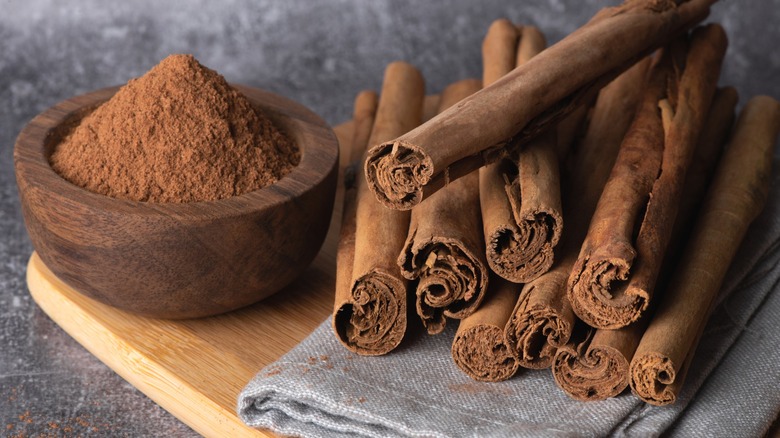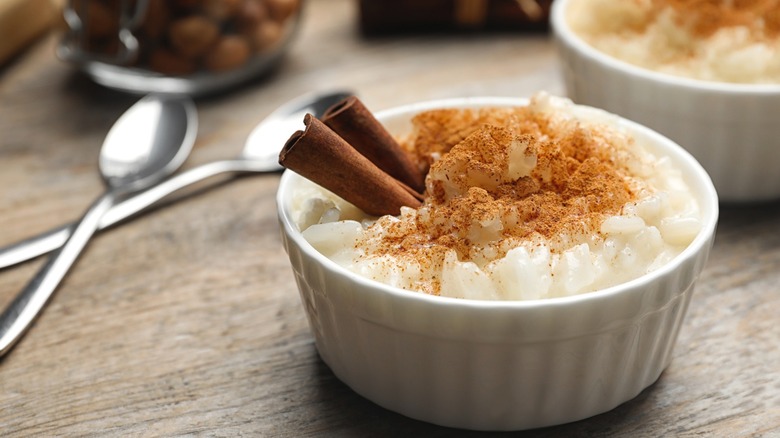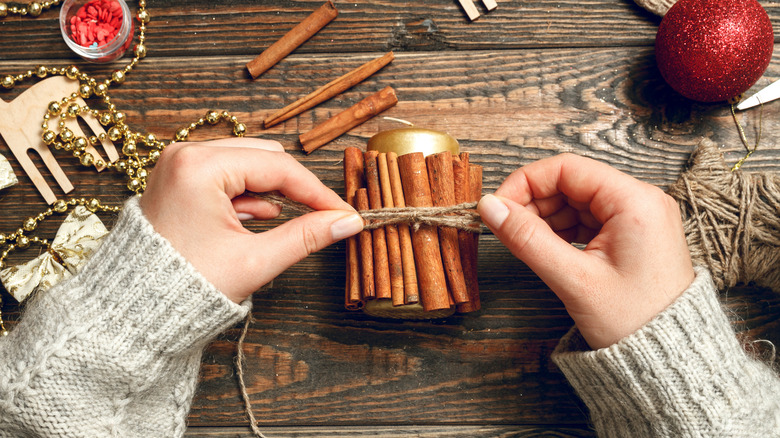Is It Possible To Eat Raw Cinnamon Sticks?
There's something so comforting about cinnamon. Its aroma fills your kitchen when you make cinnamon rolls from scratch, and the delicious flavor makes treats irresistible. Cinnamon sticks in particular add a touch of warmth to everything from entrees to desserts and beverages. The sticks are usually not consumed directly; instead, they're either ground into cinnamon powder or used whole to release flavor, then removed before eating. But are they safe to eat on their own?
The answer is yes — but also no. While technically edible — as in, they are not outright poisonous — there are some solid reasons why you shouldn't eat raw cinnamon sticks. Aside from the fact that the sticks are difficult to chew and not very tasty on their own, the more alarming issue is their possible toxicity. The most common type of cinnamon (cassia) contains a compound called coumarin, which can be toxic in large doses. While regular, moderate cinnamon consumption is not a cause for concern, it's best not to overdo it with the spice. Because of its higher concentration in the sticks, eating them whole can put individuals sensitive to coumarin at greater risk.
In particular, coumarin is contraindicated for those with liver disease or on medication for the condition. It should also be avoided by those on certain medications for diabetes and heart disease, due to possible side effects caused by their interactions. Because not enough is known about courmarin's toxicity, it should also be avoided by anyone pregnant or breastfeeding (per WebMD).
You can eat cinnamon sticks but here's why you shouldn't
Aside from issues associated with coumarin, there are more immediate risks involved with eating cinnamon sticks. First and foremost, they are a choking hazard, especially for children. Cinnamon sticks are made from the dried inner bark of Cinnamomum trees. The dry and wooden fibrous material is not easily chewed or swallowed, which can lead to choking, breathing obstruction, mouth and throat irritation, and — if inhaled — lung damage. Our stomachs cannot process the insoluble fiber either, so suffice it to say that the havoc cinnamon sticks can wreak in the digestive and excretory systems is best avoided. People with asthma are particularly at risk here and shouldn't attempt to eat raw cinnamon sticks.
With all the delicious and safer ways to enjoy cinnamon, you don't want to mess around with eating tree bark. Save the sticks for their more traditional use of adding flavor to anything they are cooked with. They are as essential in the Mexican rice-based drink horchata as they are in European mulled wine. They can be stewed into sweets like rice pudding or savory dishes like curried rice. As with bay leaves, star anise, galangal, lemongrass, and other fibrous ingredients used in cooking for their flavorings, these are either meant to be eaten around or discarded before serving.
How to use them and infuse them
Although they are not intended to be nibbled on, fragrant cinnamon sticks lend themselves to plenty of non-eating-related purposes in your home. Their unmistakable and powerful scent makes them useful as a natural air freshener. In fact, there's even a TikTok cinnamon-water fish-smell hack that is meant to rid your kitchen of overpowering odors — simply put cinnamon sticks or powdered cinnamon into boiling water then remove it from the heat, Soon enough, the pleasing fragrance of cooked cinnamon will replace any lingering stinkiness.
Just leaving them out in the open will lend the space a cozy, sweet, and spicy smell. Try placing a few in a decorative bowl or tray to infuse any room. Tie some together into a bundle for a decorative cinna-bomb that can be placed on a side table or hung from a windowsill. They can be made into cute tree ornaments, used in wreaths, and an infinite number of handmade crafts. So while there's no reason to eat cinnamon sticks raw, there are plenty of reasons to keep them in your arsenal for cooking and entertaining.



